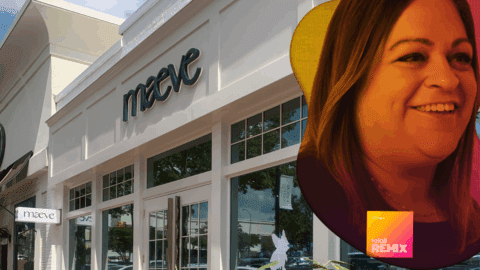Retailers are facing both a major opportunity and a major challenge in the coming months: shoppers are primed to spend big during the holidays, but labor and product shortages may make it difficult to fully take advantage of this opportunity. It’s a tricky proposition, but retailers that can maintain the inventory needed to meet this pent-up demand will set themselves up for a very successful season.
“Consumers are now reacting to that and replenishing a lot of the things that they didn’t spend on before,” said Joseph Nemia, Head of Asset-Based Lending at TD Bank in an interview with Retail TouchPoints. “So how do you maintain or accelerate this growth? The key priority really is going to be to build back inventory levels, to make sure that you have the inventory and the shelves are stocked, or you have the fulfillment capabilities to meet the demand.”
Nemia’s message: while many of the supply chain challenges facing retailers are out of their control, there are still places where they can eliminate speedbumps and grow resiliency.
Know Your Supply Chain to Control Your Supply Chain
The supply chain is being buffeted by headwinds from multiple angles, but retailers can make the most of the situation by focusing on what they’re buying and how it’s being delivered from the manufacturer to stores. Knowing the specific obstacles between you and the products you’re waiting for is the first step in figuring out a plan to work around shortages and rebuild inventory.
“Some of this is anecdotal, so it’s not science, but what I’m learning is trying to control as much as you can of the supply chain is what retailers are doing right now,” Noting that his evidence was anecdotal rather than scientific, Nemia said he believes that retailers are trying to control as much of their supply chains as they can. “What does that mean? Knowing your supply chain, knowing where the weaknesses are and knowing where the deficiencies are.”
For instance, if a certain item is being continuously backed up in ship and train containers, look for ways to get it shipped via air. This will increase costs and may require price hikes, but it’s better to have more expensive inventory on the shelves and your site than to have shoppers abandon your ecosystem altogether and go to a competitor.
Getting your supply chain under control now also can head off future uncertainty. TD Bank projects that inflation will rise in the coming months, and the more inventory you have bought and paid for, the less you and your customers will be impacted by future price hikes.
“The most important aspect, from an inflationary standpoint, is inventory management for the customers now,” said Nemia. “Very simply, if you build inventory today and there’s inflation, you’re selling that product tomorrow at a higher price. That’s sort of a simplistic view of it, but you really need to optimize your inventory levels. As I said before, you want to have a sufficient amount of inventory and you don’t want to be caught short.”
Invest Based on Lessons Learned During Lockdown
Despite the turbulence, this is still an important time to make investments in the supply chain and other areas. Nemia noted that interest rates are low, creating the perfect opportunity to patch up any deficiencies discovered during lockdown. “I’d say the unintended benefit of the pandemic was that it forced companies to really take a hard look at areas of improvement that weren’t so obvious during normal times,” said Nemia.
One area where retailers have been doing a lot of work is omnichannel alignment. Even retailers who were well-positioned before the pandemic have continued investing in the digital side to bolster their last mile and in-store pickup capabilities. This can help retailers meet rising customer demands, which will be important in keeping up with the coming holiday rush.
“What does the consumer want?” asked Nemia. “They want faster service. They want a convenient shopping experience. They want accessibility, which includes delivery in many cases, or curbside pickup. Something that I don’t think people thought about before, or maybe they thought about it but didn’t invest in, is improved health and safety protocols such as contactless payments.”
These investment plans are occurring at a good time for retailers to work hand-in-hand with lenders to make the most of the opportunity, according to Nemia. Many institutions have their own retail expertise and insights into customer behavior, and they can help companies focus their efforts on bolstering the aspects of their business that will offer the biggest returns on any investment.
“If I’m a borrower, I’m going to ask the lender how long you have been doing this, and have you worked through different economic cycles?” said Nemia. “Have you been here the whole time, during the challenging years as well as the years when there’s big growth in the economy? How have you behaved during the different cycles? That’s easily discoverable by any borrower.”













